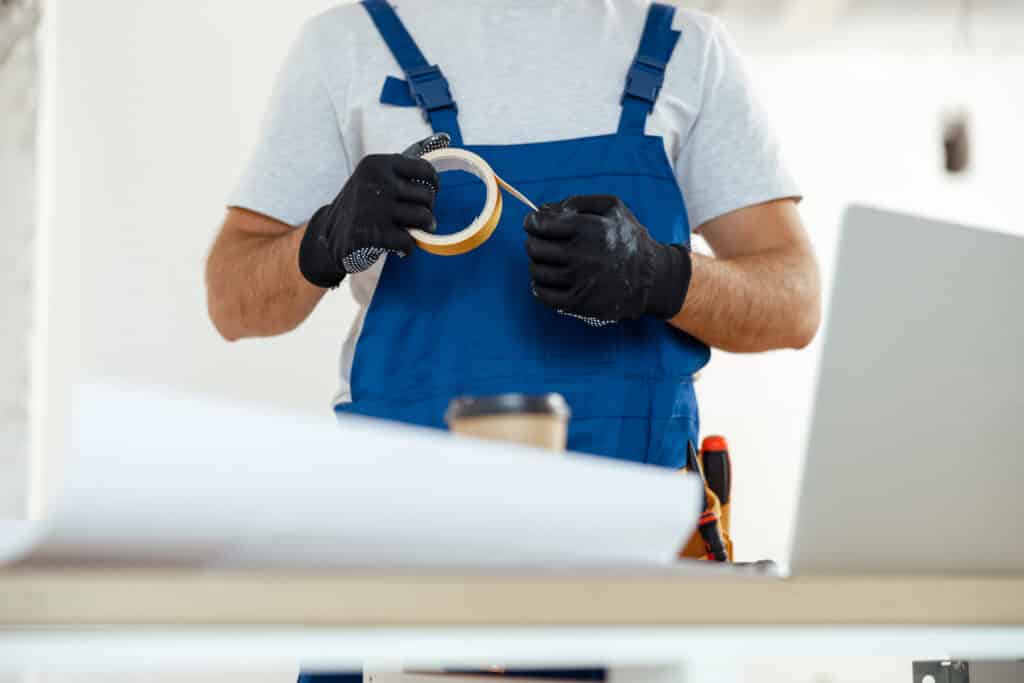If you have ever tried fixing a leaky pipe at home, you know it can feel overwhelming. But the truth is that using plumbing tape correctly is really simple once you get the hang of it. In this practical plumbing tape guide, we’ll walk you through each step with real‑world examples. So you can feel confident tackling small plumbing jobs yourself or know exactly what to expect when you call in the pros.
Why Plumbing Tape Matters
Plumbing tape plays a crucial role in creating watertight seals on threaded pipe connections. When used correctly, it helps prevent leaks, protects threads from corrosion, and reduces the risk of future plumbing failures. Without it, even a newly installed fitting can start to drip or loosen over time.
The best plumbing tape doesn’t just stop leaks, it keeps fittings secure under daily water pressure. Whether you’re installing a faucet, tightening a shower arm, or sealing a garden hose connector, this plumbing tape guide helps ensure every connection is secure and reliable. When tape is applied incorrectly or skipped altogether, leaks may not show up right away, but they often do later, and usually at the worst time.
What Type of Plumbing Tape Should You Use?
Many products claim to be great pipe thread sealants. But two stand out:
- PTFE Thread Tape (Teflon tape): Common white tape that is easy to use.
- Yellow PTFE Tape: Heavier duty for gas lines.
For a typical water pipe, stick with the white version. It’s thin, stretchy, easy to apply, and great for stopping leaks on threaded fittings. In Zephyr, Texas, a lot of locals appreciate this simplicity: just wrap it around, screw the parts together, and you’re done.
Step‑by‑Step Plumbing Tape Guide
Step one: Clean the threads
Remove old tape or sealant with a rag. If there’s rust or debris, use a wire brush. A clean surface ensures the tape sticks properly.
Step two: Pull out enough tape
Cut a length about 4 to 6 times the circumference of the male thread. That gives you enough to wrap 4‑6 times around.
Step three: Wrap in the right direction
Once you slip tape onto the start of threads, wrap clockwise when viewed from the end. That way, when you screw the fitting in, the tape wraps tighter instead of sliding off.
Step four: Overlap slightly on each turn
Cover every ridge. Too little and you risk small leaks; too much and threads may not seal properly. Four nice, close layers work best for most plumbing jobs.
Step five: Tear it off cleanly
At the end of your turns, you pull and tear or cut the tape, leaving a neat end. Smooth it into place so it doesn’t stick out.
Step six: Thread the connection
Hand tighten, then snug with a wrench. No need to overtighten; if done right, the seal is already in place.
Tips to Avoid Common Mistakes
- Not cleaning old tape away may sound obvious, but I see it all the time. Old bits can trap water and cause slow drips.
- Wrapping the wrong way causes the tape to bunch up when tightening.
- Overwrapping will prevent the threads from seating fully, which can cause leaks or damage.
When Plumbing Tape Isn’t Enough
While plumbing tape works well for most threaded connections, some situations call for extra sealing power. For joints exposed to constant pressure, vibration, or high temperatures, a thread sealant paste can provide a stronger, more durable seal. It fills in microscopic gaps that tape might miss, ensuring a leak-free fit. In systems like gas lines or HVAC setups, using a heavy-duty thread sealant or certified yellow PTFE tape is often required for safety and compliance. Knowing when to use tape and when to go with paste helps ensure a secure, long-lasting connection.
Seal It Right, The First Time: Let’s Fix That Leak Today
A small leak can become a big problem fast, especially in Texas heat or with older pipes. With the right plumbing tape and a clear approach, most issues are easy to fix, and if you’d rather have it handled by trusted local pros, On Point Plumber is here to help. We offer honest advice, fast responses, and workmanship that speaks for itself. Need a hand? Contact us now or visit our service page to get started.
Frequently Asked Questions
Can I use plumbing tape on plastic pipes?
Yes. Just clean the threads and wrap gently. Don’t overtighten; plastic threads are delicate.
What if the leak continues after using tape?
Check if the tape was applied in the right direction, with 4‑6 wraps. If so, the thread itself may be damaged. Replace the fitting or use thread sealant paste.
How long will plumbing tape last?
Quality white PTFE tape lasts for years. We often leave sealed fittings for routine maintenance without failure.
Do I need tape on both male and female threads?
Only the male threads. Female threads shouldn’t get tape inside them.
Can I use yellow gas tape on water pipes?
You can, but it is thicker and harder to apply cleanly. Stick with white tape for water pipes.

